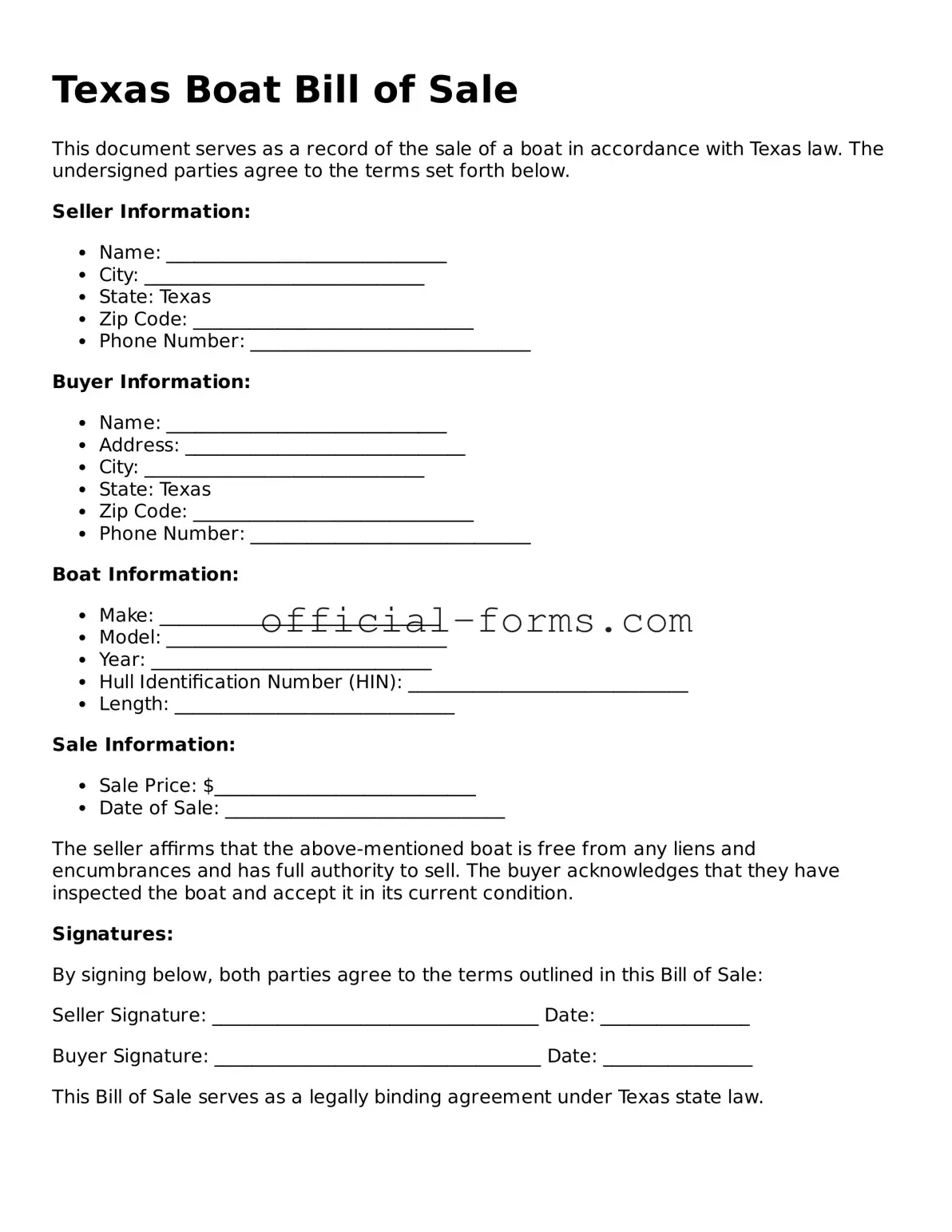Filling out the Texas Boat Bill of Sale form can seem straightforward, but many people make common mistakes that can lead to complications later on. One frequent error is failing to include the correct information about the boat. This includes details like the hull identification number (HIN), make, model, and year. Without accurate information, the bill of sale may not be valid.
Another mistake is neglecting to provide both the seller's and buyer's full names and addresses. This information is crucial for establishing ownership and ensuring that the transaction is legally recognized. Incomplete or incorrect names and addresses can create issues if the buyer needs to register the boat or if any disputes arise.
Some individuals forget to include the sale price. The bill of sale should clearly state the amount paid for the boat. Omitting this detail can complicate tax assessments and may even raise questions about the legitimacy of the sale.
Additionally, failing to sign and date the form is a common oversight. Both parties must sign the bill of sale for it to be legally binding. Without signatures, the document lacks the necessary validation and may not hold up in legal situations.
Another error involves not having a witness or notary present during the signing. While Texas does not require a notary for a bill of sale, having one can add an extra layer of legitimacy to the document. It can help prevent disputes by confirming that both parties willingly entered into the agreement.
People also sometimes forget to keep a copy of the bill of sale for their records. After the transaction, it's important for both the buyer and seller to have a copy of the signed document. This serves as proof of the sale and can be essential for future reference, especially if questions arise about ownership.
Finally, overlooking local regulations can lead to problems. While the Texas Boat Bill of Sale form is a standard document, some counties or municipalities may have additional requirements. Checking local laws ensures compliance and helps avoid potential legal issues down the road.
